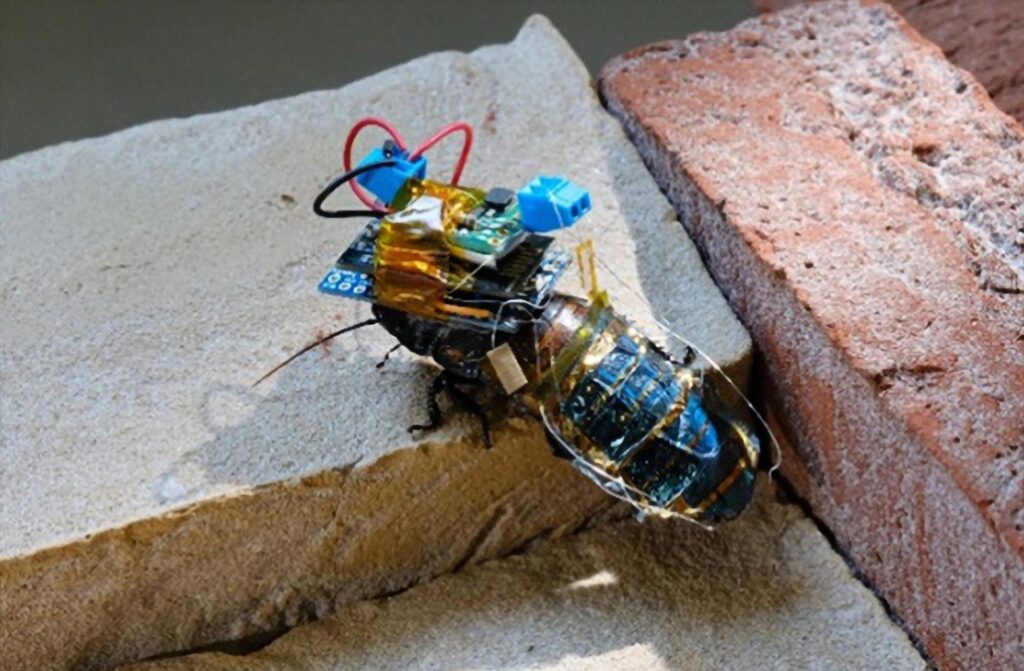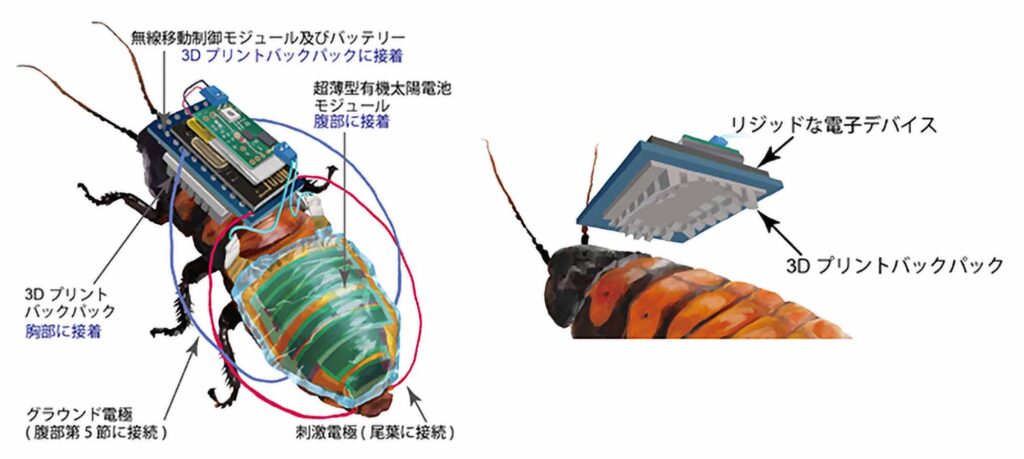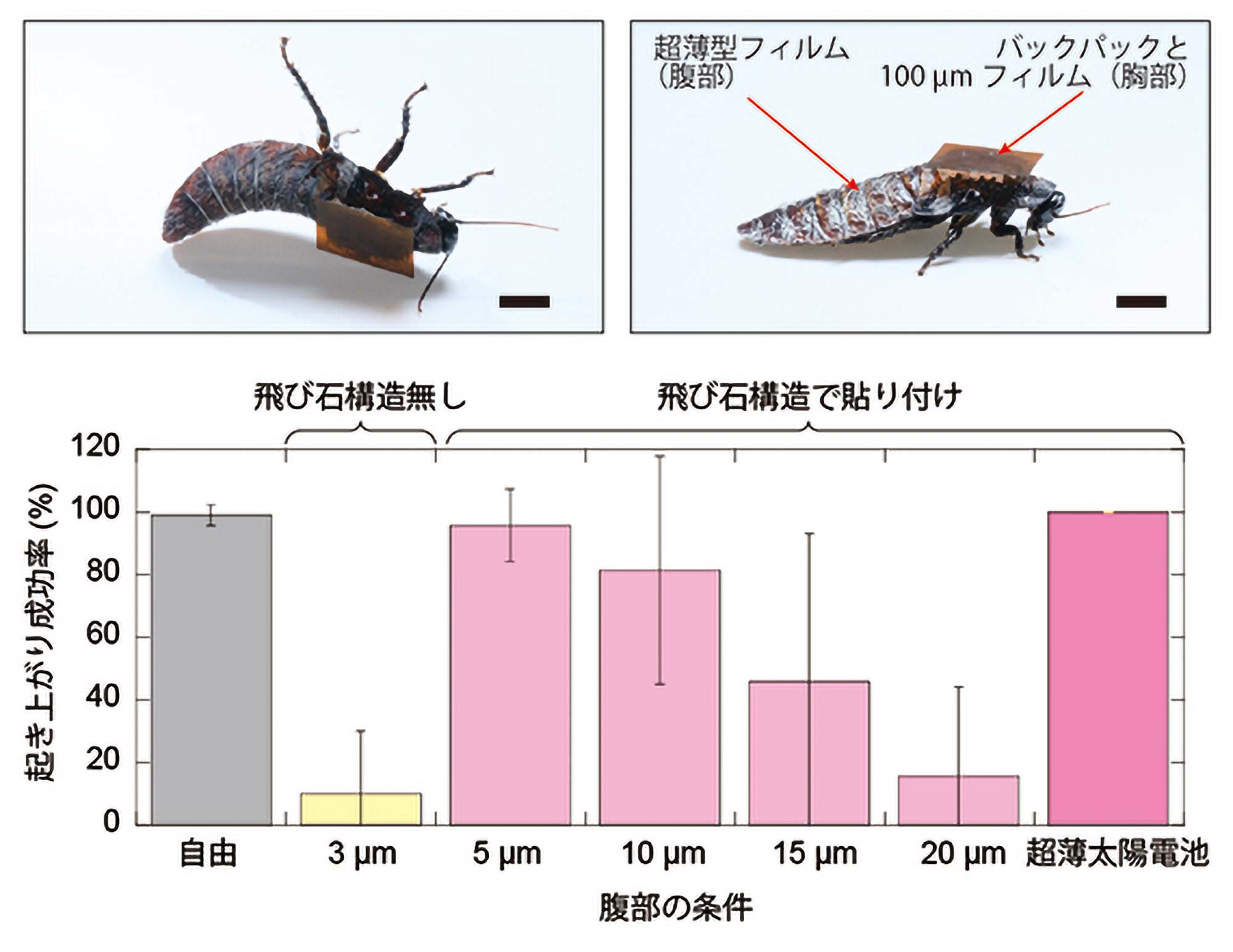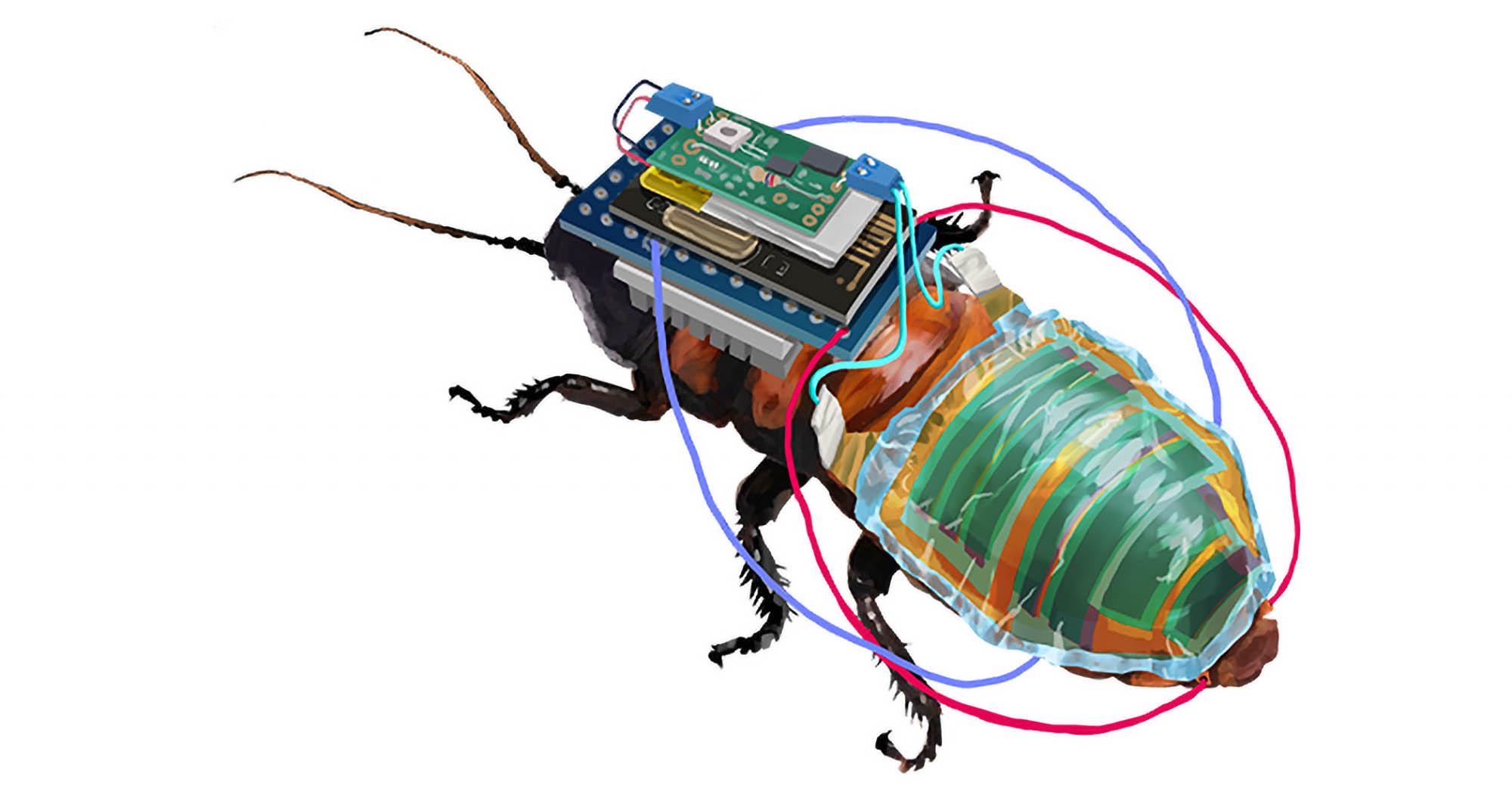Japanese boffins have created part insect part machine cyborg cockroaches capable of tackling jobs ranging from monitoring hazardous areas to environmental protection.
The project led by researchers at the RIKEN Cluster for Pioneering Research (CPR) has generated a system for creating remote-controlled cyborg cockroaches equipped with a tiny wireless control module powered by a rechargeable battery.
The battery is fitted with a solar cell where Micro technology including ultrathin electronics and flexible materials allows the insects to move freely.

(RIKEN/Newsflash)
The development of the cyborg cockroaches was reported in the scientific journal npj Flexible Electronics on 5th September.
The problem that has hampered research until now has been how to remotely control them over a long period of time, which has been solved now with the wireless control of their leg segments powered by a tiny rechargeable battery.
They said that keeping the battery adequately charged was fundamental as nobody wants a suddenly out-of-control team of cyborg cockroaches roaming around.
In a statement, the developer said: “To successfully integrate these devices into a cockroach that has limited surface area required the research team to develop a special backpack, ultrathin organic solar cell modules, and an adhesion system that keeps the machinery attached for long periods of time while also allowing natural movements.”
Led by Kenjiro Fukuda, the team experimented with Madagascar cockroaches, which are approximately 6 cm long.
They attached the wireless leg-control module and lithium polymer battery to the top of the insect on the thorax using a specially designed backpack, which was modelled after the body of a model cockroach. The backpack was 3D printed with an elastic polymer and conformed perfectly to the curved surface of the cockroach, allowing the rigid electronic device to be stably mounted on the thorax for more than a month.
The ultrathin 0.004 mm thick organic solar cell module was mounted on the dorsal side of the abdomen. “The body-mounted ultrathin organic solar cell module achieves a power output of 17.2 mW, which is more than 50 times larger than the power output of current state-of-the-art energy harvesting devices on living insects,” according to Fukuda.

(RIKEN/Newsflash)
The ultrathin and flexible organic solar cell, and how it was attached to the insect, proved necessary to ensure freedom of movement.
After carefully examining natural cockroach movements, the researchers realized that the abdomen changes shape and portions of the exoskeleton overlap.
To accommodate this, they interleaved adhesive and non-adhesive sections onto the films, which allowed them to bend but also stay attached.
When thicker solar cell films were tested, or when the films were uniformly attached, the cockroaches took twice as long to run the same distance and had difficulty righting themselves when on their backs.
Once these components were integrated into the cockroaches, along with wires that stimulate the leg segments, the new cyborgs were tested. The battery was charged with pseudo-sunlight for 30 minutes, and animals were made to turn left and right using the wireless remote control.
“Considering the deformation of the thorax and abdomen during basic locomotion, a hybrid electronic system of rigid and flexible elements in the thorax and ultrasoft devices in the abdomen appears to be an effective design for cyborg cockroaches,” says Fukuda.
“Moreover, since abdominal deformation is not unique to cockroaches, our strategy can be adapted to other insects like beetles, or perhaps even flying insects like cicadas in the future.”

(RIKEN/Newsflash)

(RIKEN/Newsflash)
To find out more about the author, editor or agency that supplied this story – please click below.
Story By: Michael Leidig, Sub-Editor: Marija Stojkoska, Agency: Newsflash
The Ananova page is created by and dedicated to professional, independent freelance journalists. It is a place for us to showcase our work. When our news is sold to our media partners, we will include the link here.




